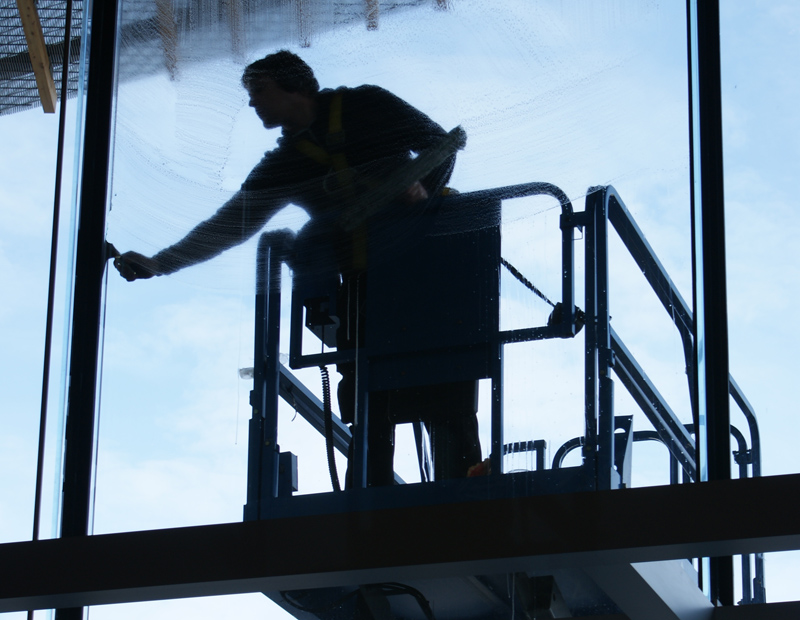Planned preventative maintenance and technology

|
Contents |
[edit] Introduction
In a time of ongoing pressure from budget cuts and demands for investment in things newer and ‘shinier’ than maintenance, is it possible to meet the demands of maintaining an ever-ageing building stock to good standards and with limited resources?
The answer is yes. A whole new raft of technology is available to assist the property or facilities manager to more effectively manage planned preventative maintenance (PPM).
[edit] Understanding PPM needs
Delivering cost efficiency requires a detailed understanding of the building’s lifecycle (including its current and projected usage) and its structure, plant and other components.
An understanding of the building owner and/or manager’s intentions (eg long-term plans for refurbishment or sale), and those of each tenant, combine to create a comprehensive understanding of need.
The opposite of reactive repairs, PPM is essentially a strategic approach which, through ongoing surveillance and maintenance, can substantially reduce large, unexpected costs, emergency call-out charges and downtime during repair work.
A comprehensive PPM schedule ensures that any changes made to a building take note of any obvious issues in relation to statutory requirements. This includes identifying the provision and means of escape, disability access, energy and health and safety issues, drawing-up reports, with action followed through as necessary.
For example, the Minimum Energy Efficiency Standard Regulations (MEES) were implemented in 2018. It is now illegal for new leases to be granted, or existing leases renewed, on commercial properties in England and Wales with an energy performance certificate (EPC) rating of F or G. While the new MEES Regulations caused initial concern in the property world, they demonstrate how an upfront approach to sustainability can result in longer-term cost savings through work such as including insulation and more energy-efficient mechanical and electrical installations.
So, PPM is at the heart of good business practice as well as good property management.
[edit] The built environment’s IT revolution
And as with so many other aspects of business management, PPM has benefited from the IT revolution, resulting in a more efficient and effective service.
Mobile data capture software is of great benefit to PPM work. On site, data can be efficiently assessed using hand-held technology which is then uploaded to reporting software, ensuring that a consistent structure is followed and the risk of error substantially reduced.
Data capture software collects and compares data with predefined element lists, producing tailored outputs to suit reporting requirements, prioritising expenditure over a specified period. Due to the element grades being consistent and predefined, the software allows for more intelligent decisions to be made across portfolios, often resulting in significant cost savings. Data capture software also allows for rapid data analysis and document preparation, resulting in a faster turnaround.
In addition to increasing efficiencies, this means of reporting enables a greater understanding of the issues and the ability to isolate elements, sub elements, grades or priorities. It allows a building owner or manager to group costs by region or across their entire portfolio, creating greater efficiencies and to budget and prioritise expenditure more effectively, and to put in place larger-scale programmes of work. Furthermore, the ability to analyse the cost of maintenance versus capital expenditure creates greater transparency in budgeting, as well as highlighting the efficiency of current maintenance suppliers/contracts.
Online reporting is also becoming more user-friendly. Where it benefits the end results and creates savings, clients can be encouraged to get involved, inputting into their own reports, whether using a desktop computer or a mobile device on site. And as a working document which can be continually updated, online reporting offers greater flexibility than the old hard copy format – which again benefits both efficiency and effectiveness.
[edit] So where will the technology take us next?
3D photography enables various sets of data to be linked to a 3D format and as such, links PPM to BIM. 3D cameras also have substantial benefits.
Take working at height, for example. Accessing rooflines, fascias and guttering is a perpetual problem for many property maintenance professionals. Scaffolding and cherry-pickers can be prohibitively expensive and may even be unsuitable in some instances.
Clients needing PPM surveys on unusually remote and inaccessible property assets may benefit from drone technology which can safely capture all the necessary information. Drones not only provide an immediate, cost-effective solution, but can photograph remote locations with virtually no disruption.
As a result of data provision through images, cloud surveys and more accurate surveying of existing buildings, BIM – once the province of just building designers – now increasingly links to both PPM and facilities management, causing efficiencies for each. The benefits of BIM are unparalleled, particularly when a substantial survey needs to be undertaken while the building remains occupied.
In the past five years or so there have been considerable changes in the way PPM can benefit from technology; many more positive changes are anticipated in the years ahead.
As the Internet of Things becomes more widely used, it is inevitable that a building’s plant will communicate directly into PPM reporting and scheduling.
Chartered building engineers or facilities managers will be able to plan ahead with confidence, and have reliable data and clear priorities. The new tools and technology at their disposal will save both time and money. It is a silent revolution in the way our buildings are maintained, and a great opportunity to boost the specialist knowledge and value of professionals in this market.
[edit] About this article
This article was written by London-based Trident Building Consultancy in August 2019.
[edit] Related articles on Designing Buildings Wiki
- Display energy certificate DEC.
- Energy certificates for buildings.
- Energy efficiency regulations: The challenges for landlords.
- Energy performance certificate EPC.
- Energy targets.
- In-house or outsource maintenance.
- Intermediate Building Contract.
- JCT Repair and maintenance contract.
- JCT Sub-subcontract.
- Maintenance.
- Measured term contract.
- Minimum energy efficiency standard regulations for domestic and non-domestic buildings.
- Non-domestic Private Rented Property minimum standard.
- Performance gap.
- Private rented sector regulations and traditional buildings.
- Scheduled maintenance.
[edit] External references
Featured articles and news
Construction Skills Mission Board launch sector drive
Newly formed government and industry collaboration set strategy for recruiting an additional 100,000 construction workers a year.
New Architects Code comes into effect in September 2025
ARB Architects Code of Conduct and Practice available with ongoing consultation regarding guidance.
Welsh Skills Body (Medr) launches ambitious plan
The new skills body brings together funding and regulation of tertiary education and research for the devolved nation.
Paul Gandy FCIOB announced as next CIOB President
Former Tilbury Douglas CEO takes helm.
UK Infrastructure: A 10 Year Strategy. In brief with reactions
With the National Infrastructure and Service Transformation Authority (NISTA).
Ebenezer Howard: inventor of the garden city. Book review.
The Grenfell Tower fire, eight years on
A time to pause and reflect as Dubai tower block fire reported just before anniversary.
Airtightness Topic Guide BSRIA TG 27/2025
Explaining the basics of airtightness, what it is, why it's important, when it's required and how it's carried out.
Construction contract awards hit lowest point of 2025
Plummeting for second consecutive month, intensifying concerns for housing and infrastructure goals.
Understanding Mental Health in the Built Environment 2025
Examining the state of mental health in construction, shedding light on levels of stress, anxiety and depression.
The benefits of engaging with insulation manufacturers
When considering ground floor constructions.
Lighting Industry endorses Blueprint for Electrification
The Lighting Industry Association fully supports the ECA Blueprint as a timely, urgent call to action.
BSRIA Sentinel Clerk of Works Training Case Study
Strengthening expertise to enhance service delivery with integrated cutting-edge industry knowledge.
Impact report from the Supply Chain Sustainability School
Free sustainability skills, training and support delivered to thousands of UK companies to help cut carbon.
The Building Safety Forum at the Installershow 2025
With speakers confirmed for 24 June as part of Building Safety Week.
The UK’s largest air pollution campaign.
Future Homes Standard, now includes solar, but what else?
Will the new standard, due to in the Autumn, go far enough in terms of performance ?
BSRIA Briefing: Cleaner Air, Better tomorrow
A look back at issues relating to inside and outside air quality, discussed during the BSRIA briefing in 2023.
Restoring Abbotsford's hothouse
Bringing the writer Walter Scott's garden to life.
Reflections on the spending review with CIAT.


























